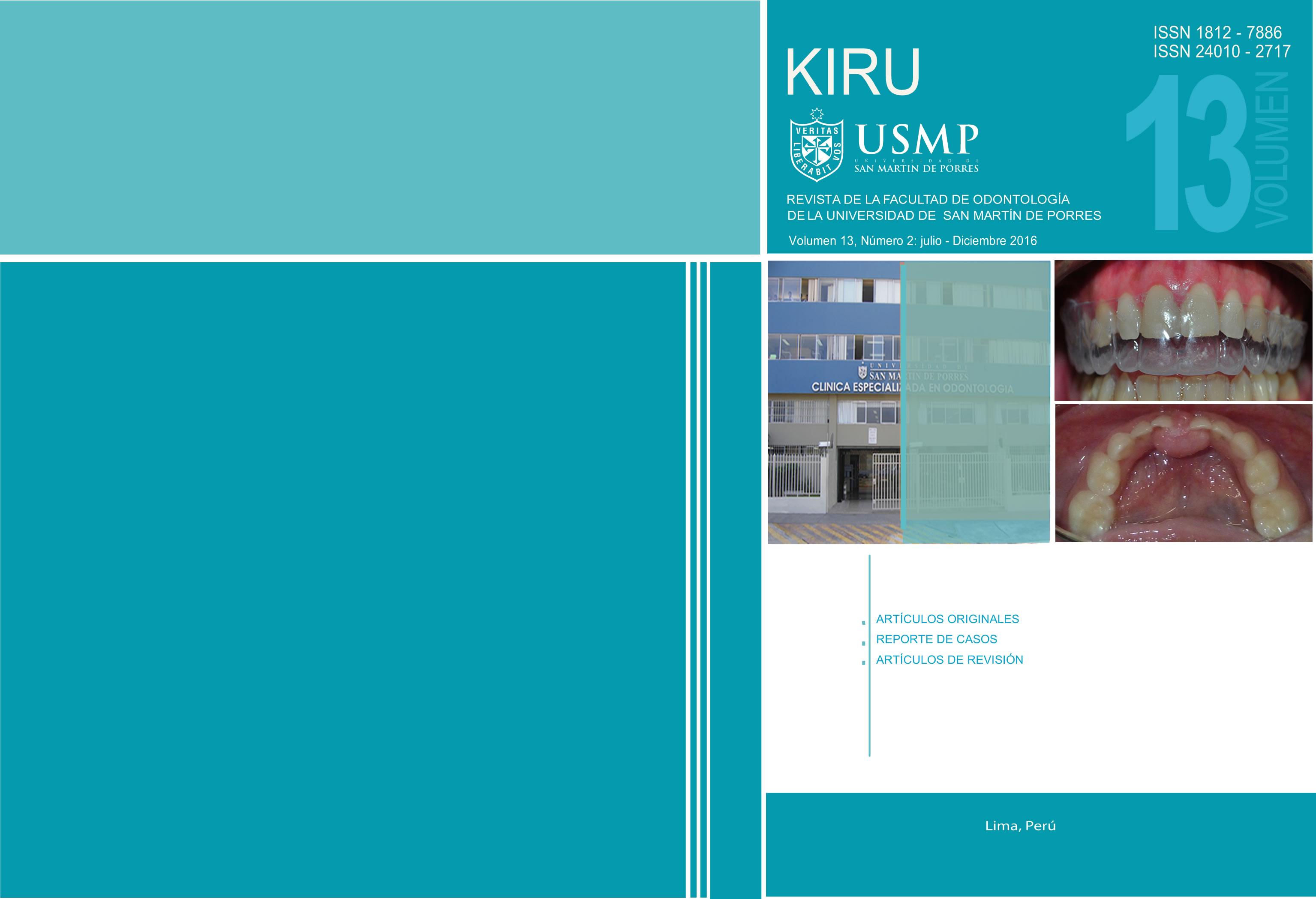EVALUATION THE DEGREE OF ROOT RESORPTION CAUSED BY CANINE TOMOGRAPHIC IMPACTED
Keywords:
Canine impacted, Cone beam, Location.Abstract
Objective: the proposal of this study was to examine the degree of root resorption in parts adjacent to impacted maxillary canines, by
means of a cone-beam computerized tomographic evaluation, which has proven to be a reliable and accurate method to assess this
type of complications. Materials and methods: this study was an evaluation of 1265 ct, which obtained a sample of 72 ct with canines
impacted maxillary, 36 men and 36 women, ranging from 13 to 43 years old. The variable studied was reabsorption of the adjacent part:
the classification of levander and malmgren was used to assess the degree of root resorption. Results: it was observed that 49% had
grade 0 reabsorption, followed by 19% grade 3 reabsorption. No statistically significant difference was found according to sex p = 0.47.
This study found a greater number of patients younger than 18 years presenting root resorption of incisor side (63%) compared to
patients older than 18 years (38%).
Downloads
References
Ferguson JW. Management of the unerupted maxillary canine. Br Dent J 1990;169:11-7 VI Woloshyn H,_Artun J, Kennedy DB, Joondeph DR. Pulpal and periodontal reactions to orthodontic alignment of palatally impacted canines. Angle Orthod 1994;64:257-64
Lai C.,Bornstein M, Mock L.Impacted maxillary canines and root resorptions of neighbouring teeth: a radiographic analysis using cone-beam computed tomography. European Journal of Orthodontics.2012:10(7);2-10
Kurol J, Ericson S, Andreasen JO. The Impacted Maxilary Canine.Chapter 6. p 125–175.
Ericson S, Kurol J. Radiographic assessment of maxillary canine eruption in children with clinical signs of eruption disturbance. Eur J Orthod. 1986;8:133–140
Ericson S, Kurol J. Radiographic examination of ectopically erupting maxillary canines. Am J Orthod Dentofacial Orthop.1987;91:483–492
F.Manzi, J.Lana, L. Fonseca.Avaliação de caninos superiores impactados por meio de tomografía computadorizada de feixecônico.RevClínOrtod Dental Press. 2011;10(3):114-20
Alqerban A, Jacobs R, FieuwsS.Comparison of 6 cone-beam computed tomography systems for image quality and detection of simulated canine impactation-induced external root resorption in maxillary lateral incisors. Am J Orthod Dentofacial Orthop 2011; 140: 129- 139.
Fuss Z, Tsesis I, Lin S. Root resorption—diagnosis, classification and treatment choices based on stimulation factors. Dent Traumatol.2003;19:175-82.
Gravdal E, Brudvik P. Apical Root resorption of incisors after orthodontic treatment of impacted maxillary canines: a radiographic study. Am J Orthod Dentofacial Orthop 2012;141:427-35)
Uribe A. Ortodoncia: Teoria y Clínica. Colombia: Edit. CIB, 2004
Becker A, Smith P, Behar R 1981 The incidence of anomalous maxillary lateral incisors in relation to palatallydisplaced cuspids. Angle Orthodontist 51: 24–29
Ericson S, Kurol J. Incisor root resorptions due to ectopic maxillary canines imaged by computerized tomography. A comparative study in extracted teeth. Angle Orthod. 2000;70:92–99
Ericson S, Kurol J. Resorption of Incisors After Ectopic Eruption of Maxillary Canines: A CT Study. Angle Orthod 2000;70:000–000
Ericson S, Kurol J. Resorption of maxillary lateral incisors caused by ectopic eruption of the canines. A clinical and radiographic analysis of predisposing factors. Am J Orthod Dentofacial Orthop. 1988;94:503–513
Downloads
Published
Issue
Section
License
- Los autores/as conservarán sus derechos de autor y garantizarán a la revista el derecho de primera publicación de su obra, el cuál estará simultáneamente sujeto a la Licencia de reconocimiento de Creative Commons que permite a terceros compartir la obra siempre que se indique su autor y su primera publicación esta revista.
- Los autores/as podrán adoptar otros acuerdos de licencia no exclusiva de distribución de la versión de la obra publicada (p. ej.: depositarla en un archivo telemático institucional o publicarla en un volumen monográfico) siempre que se indique la publicación inicial en esta revista.
- Se permite y recomienda a los autores/as difundir su obra a través de Internet (p. ej.: en archivos telemáticos institucionales o en su página web) posterior al proceso de aprobación del manuscrito, lo cual puede producir intercambios interesantes y aumentar las citas de la obra publicada.







